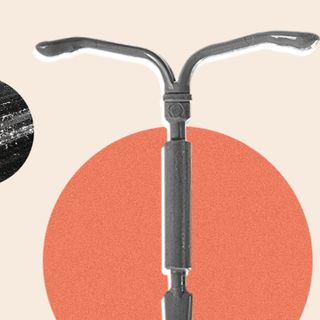
What It’s Like To Live With: Recurring Fainting Spells
“My brain was getting 7-8% less blood than it should’ve been.”

What It’s Like to Live With explores the stories of people who see and experience every day a little differently.
Each case of Postural Orthostatic Tachycardia Syndrome, or POTS, is kind of unique — different people have different symptoms; it actually took me a long time to get diagnosed. I used to faint in the shower almost every morning, I’ve had to sit down so many times mid-shower to keep myself from falling down and hitting my head. I’ve fainted in the metro, I’ve fainted in my boss’s office — I even fainted during a sexual harassment training at work.
The heart isn’t the only thing responsible for circulating your blood through your body — blood vessels contract and expand to move the blood across, and the muscles help them do that. In POTS, the automatic control of this movement by the nervous system malfunctions, and your blood pools in your extremities. This also results in low blood pressure because your circulatory system can’t maintain the pressure.
The pressure falls especially when you switch from lying down, to sitting down or standing up — that’s why it’s called ‘postural.’ When you are lying down, things are relatively normal because your body is on a plane surface. But the moment you sit up, or stand, the circulatory system has to deal with gravity — and since it’s unable to counteract the gravitational pull, there’s not enough blood going to your brain. My brain was getting 7-8% less blood than it should’ve been.
Because your circulatory system isn’t pumping blood properly, your heart works double-time to keep it moving. While your heart rate shoots up, your blood pressure is low; even when I fainted, my heart would be pounding as though I was sprinting. The strain on my body, as the doctor later said, was equivalent to running a marathon every day.
But as I said, it took me a long time to get a diagnosis. I had mononucleosis in college, and it relapsed about a year-and-a-half to two years after. But even after I got better, I continued experiencing fatigue for weeks. Mentally, I felt slow and found everything foggy, and sometimes I would have headaches so bad that I couldn’t move. I wasn’t eating much either because I didn’t feel hungry, and I was often nauseous. I lost so much weight; it felt like I was disappearing.
Initially, I thought it was because I was recovering from a viral infection, then I thought it was maybe because I wasn’t working out enough. But when it wasn’t getting any better, I saw a few doctors.
The biggest symptom I recognized then was exhaustion, and all the doctors told me it was probably a result of depression since my boyfriend had moved away. They told me it’s all in my head — but while I knew I was sad about my boyfriend moving, I knew I wasn’t depressed. If anything, I was depressed because I wasn’t getting any help; and this went on for about a year. I had unconsciously adjusted to this new normal of being ‘subpar.’
Related on The Swaddle:
What It’s Like to Live With: No Stomach
At that point, I hadn’t connected my constant exhaustion with any of the other symptoms I was experiencing; I mean, they’re so generic individually that you don’t think they might add up to something. And in hindsight, the brain fog I was experiencing made it even more difficult to see things as clearly as I do now.
I found out what POTS was when I came across a ‘mystery diagnosis’-type article on my lunch break at work. As I continued reading, more and more things started clicking and I connected the dots. There was enough similarity to make me reach out to the pediatric cardiologist, who was quoted in the article. He was also a national expert on POTS, and when I went to see him, he told me that teenage and young adult women are the most commonly affected.
Before officially diagnosing me, he ran a few tests. I was strapped down to a table, which was then tilted and made exactly perpendicular to the floor — so that I was upright. They then waited for me to faint, and see how quickly that happens; I started blacking out in under five minutes. He also asked me to keep my hands raised for a full minute, and within 20-30 seconds, my arms turned ghostly white — paper-white, even.
Just having someone listen to me, take me seriously, and recognize how much it [POTS] has affected me, was such a big deal to me. He [the doctor] was very warm and supportive too.
I will probably always have poor circulation, but my POTS is completely manageable right now, and it has been for several years. I was treated for about four years with dietary changes, exercises to help strengthen my core and calf muscles, and medication — one of which was an anti-depressant to help me manage my emotions better, and also to improve blood flow to the brain. I was also prescribed beta-blockers to slow my heart. At present, I manage my symptoms by trying to stay active, and by eating a lot of salt to increase my blood pressure.
While I haven’t experienced most of the symptoms in a while, I honestly always live with the fear of it getting bad again. I was recently pregnant, and since pregnancy can trigger POTS for women, first, I was scared to get pregnant; second, I constantly worried throughout the pregnancy that it that might happen again, and I won’t have the energy to do anything but lie in bed, besides not being able to care for my child when they came along. Thankfully, none of that happened.
This interview has been condensed and edited for clarity. As told to Devrupa Rakshit.
Devrupa Rakshit is an Associate Editor at The Swaddle. She is a lawyer by education, a poet by accident, a painter by shaukh, and autistic by birth. You can find her on Instagram @devruparakshit.
Related


Untrending: Scalp Massages May Be Comforting, But They Won’t Help Hair Grow
